


A Journey From Novice To Pro
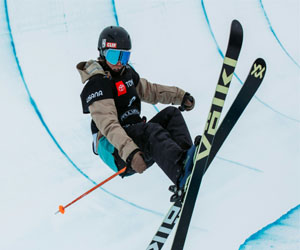
Skiing is more than just gliding down a snow-covered mountain. It's a journey of continuous improvement and skill development, offering enthusiasts the opportunity to explore the thrill of conquering the slopes with style and confidence. In this article, we'll delve into the process of skiing skills development, from the basics to advanced techniques, helping you become a more accomplished and proficient skier.
1. The Foundation: Mastering The Basics
The journey to skiing excellence begins with a strong foundation of fundamental skills. As a novice skier, you should focus on:
Balance: Maintaining proper balance on your skis is essential. Learn to distribute your weight evenly and stay centered on your skis.
Turning: Start with basic wedge turns, also known as snowplow turns. As you progress, aim to transition to parallel turns, where both skis move together smoothly.
Stopping: Perfecting your stopping technique is crucial for safety. Master the art of the snowplow stop before progressing to more advanced methods.
2. Progressing To Intermediate Level
Once you've established a solid foundation, it's time to advance your skills:
Carving: Carving involves using the edges of your skis to create smooth, controlled turns. Focus on edging and weight distribution to perfect your carving technique.
Terrain Variety: Experiment with different types of slopes, from groomed runs to more challenging terrain. Learning to navigate varying conditions will broaden your skiing skill set.
Speed Control: Advanced skiers have precise control over their speed. Work on your ability to increase or decrease your velocity as needed, enhancing your overall mastery of the mountain.
3. Embracing Advanced Techniques
To truly excel in skiing, consider these advanced techniques:
Moguls: Tackling mogul fields is a hallmark of a seasoned skier. Learning to absorb the bumps with your legs and make controlled turns around them takes practice and finesse.
Powder Skiing: Skiing in powder snow is a dream for many enthusiasts. Keep your weight centered and make gentle, flowing movements to stay afloat on the soft snow.
Steep Slopes: Mastery of steep slopes is an advanced skill. Focus on maintaining balance and using precise turning techniques to navigate challenging terrain.
4. Skiing In The Trees And Off-Piste
Skiing in the trees and off-piste (ungroomed, natural snow areas) adds an adventurous dimension to your skill development:
Navigation: Learn to pick your lines through the trees and explore the untracked snow off-piste. It's a thrilling experience that requires quick decision-making and adaptability.
Avalanche Safety: If you venture off-piste, understanding avalanche safety is vital. Take courses and learn how to assess and mitigate risks in backcountry environments.
5. The Art Of Freestyle Skiing
Freestyle skiing involves tricks and terrain park maneuvers. Developing freestyle skills demands dedication and practice:
Jumps And Tricks: Start with basic jumps and gradually progress to more advanced tricks. Mastering jumps, spins, and grabs adds an exciting element to your skiing repertoire.
Terrain Parks: Terrain parks offer opportunities to hone your freestyle skills. Experiment with rails, boxes, and jumps to enhance your technique and style.
6. Practice And Patience
Skiing skills development is a lifelong journey. It takes patience, dedication, and practice to continually improve your abilities. Consider taking lessons and seeking feedback from experienced skiers or instructors to refine your technique.
Skiing skills development is a rewarding journey that offers enthusiasts the chance to progress from novice to expert. Whether you're perfecting the basics, embracing intermediate techniques, or tackling advanced skills like off-piste exploration and freestyle skiing, the key is to stay committed, practice regularly, and continually seek new challenges. Skiing is a sport that invites constant improvement, allowing you to revel in the thrill of the slopes while mastering the mountains with style and grace.
Pushing The Boundaries Of Mountain Biking
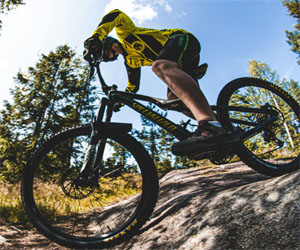 Advanced trails, characterized by steeper gradients, tighter switchbacks, and rugged terrain, offer the perfect opportunity for experienced riders to test their mettle. These trails demand a higher level of fitness, technical proficiency, and a keen understanding of bike handling. Tackling these challenges is a testament to a rider's growth and dedication to the sport.
Advanced trails, characterized by steeper gradients, tighter switchbacks, and rugged terrain, offer the perfect opportunity for experienced riders to test their mettle. These trails demand a higher level of fitness, technical proficiency, and a keen understanding of bike handling. Tackling these challenges is a testament to a rider's growth and dedication to the sport.
Moreover, experienced riders often venture into the world of competitive mountain biking. Whether it's cross-country races, downhill competitions, or enduro events, these races present a whole new level of challenge. Racing against the clock and fellow competitors adds an element of pressure and excitement that's unmatched. It's not just about completing the trail but doing it as fast as possible, and the sense of achievement from a podium finish is unparalleled.
Technical challenges are also a significant draw for experienced riders. Learning and mastering advanced techniques, such as bunny hops, drop-offs, and jumps, adds a new dimension to their riding skills. These skills not only enhance their trail-riding abilities but also open the door to more daring lines and features.
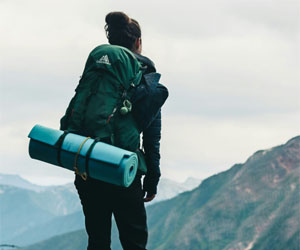 Camping isn't just about seeking solitude; it's also about embracing adventure. The wilderness is an untamed world, where surprises and discoveries await at every turn. Whether it's the thrill of spotting a rare bird, the excitement of setting up a campfire, or the wonder of stargazing in the absence of light pollution, camping is an open invitation to explore and connect with the environment.
Camping isn't just about seeking solitude; it's also about embracing adventure. The wilderness is an untamed world, where surprises and discoveries await at every turn. Whether it's the thrill of spotting a rare bird, the excitement of setting up a campfire, or the wonder of stargazing in the absence of light pollution, camping is an open invitation to explore and connect with the environment.
The call of the wilderness is also a call to disconnect from the digital realm and reconnect with our true selves. It allows us to escape the constant demands of our screens and experience life in its most unfiltered form. The lack of Wi-Fi and cellular signals is a blessing in disguise, as it encourages conversations around the campfire, storytelling under the stars, and the kind of introspection that's often neglected in our busy lives.
Camping is more than just a recreational activity; it's a way of life that lets us tap into our inner primal instincts. As we set up our tents, gather firewood, and cook our meals over an open flame, we become attuned to the rhythms of nature. We learn to appreciate the resources the wilderness provides and the importance of conservation.
Embracing The Thrill Of Exploration
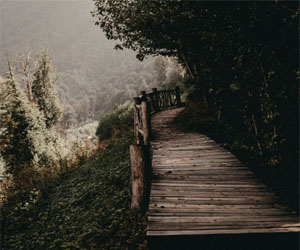 The Call Of The Unknown: The call of the unknown is a primal urge that beckons individuals to venture beyond the confines of the known world. It is a magnetic force that ignites the imagination, stirs the soul, and propels us into uncharted territory. This call transcends cultural, geographical, and temporal boundaries, unifying humanity in a shared pursuit of discovery.
The Call Of The Unknown: The call of the unknown is a primal urge that beckons individuals to venture beyond the confines of the known world. It is a magnetic force that ignites the imagination, stirs the soul, and propels us into uncharted territory. This call transcends cultural, geographical, and temporal boundaries, unifying humanity in a shared pursuit of discovery.
Courage In The Face Of Uncertainty: Journeying into the unknown often requires courage in the face of uncertainty. Whether it's embarking on a solo backpacking expedition in a remote wilderness, conducting groundbreaking scientific research, or pursuing an unconventional career path, it demands resilience, adaptability, and the willingness to confront the unexpected.
The Thrill Of Exploration: The thrill of exploration lies in the anticipation of what lies beyond the horizon. It's the exhilaration of stepping into uncharted territory, where every moment is filled with the possibility of discovery. The unknown is a canvas upon which explorers paint their experiences, leaving behind a tapestry of memories and revelations.
Expanding Horizons: Journeying into the unknown expands horizons, both literally and metaphorically. It broadens one's understanding of the world, deepens cultural awareness, and encourages personal growth.
 Rest And Immobilization: In many cases, rest and immobilization are necessary to allow the body to heal. This might involve using crutches, slings, or braces. The duration of rest depends on the injury, but it's crucial not to rush back into physical activity.
Rest And Immobilization: In many cases, rest and immobilization are necessary to allow the body to heal. This might involve using crutches, slings, or braces. The duration of rest depends on the injury, but it's crucial not to rush back into physical activity.
Physical Therapy: Physical therapy is often a cornerstone of sports injury recovery. A physical therapist can design a personalized plan to strengthen muscles, improve mobility, and restore functionality. They guide athletes through exercises that target the affected area.
Pain Management: Managing pain is a critical aspect of recovery. This may involve over-the-counter pain relievers or prescribed medications. However, athletes should follow their healthcare provider's advice on pain management to avoid potential risks.
Rehabilitation Exercises: Incorporating rehabilitation exercises into the recovery plan helps in restoring strength and flexibility. These exercises are progressive, gradually increasing in intensity as the injury heals. Athletes should perform them under the supervision of a physical therapist or trainer.
Nutrition And Hydration: A well-balanced diet rich in nutrients is essential for the body's healing process. Adequate protein, vitamins, and minerals support tissue repair and growth. Staying hydrated is equally crucial.

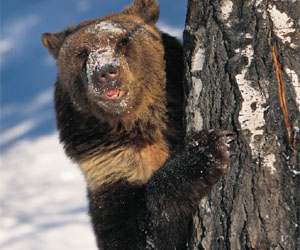
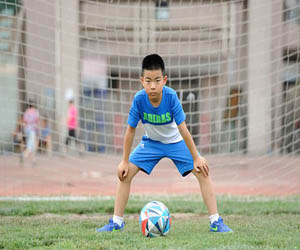
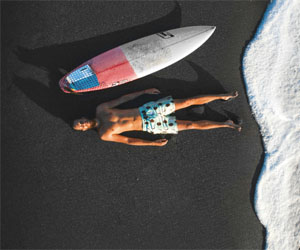
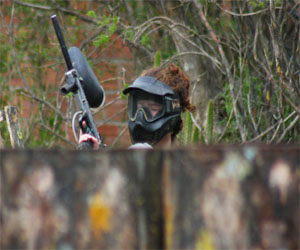
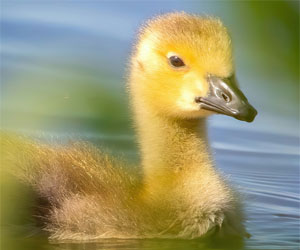
Surfing Competitions And Events
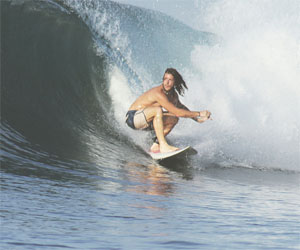 Variety Of Competitions:
Variety Of Competitions:
Surfing competitions come in various forms, catering to a wide range of surfers and preferences. Some of the most notable include:
Professional Surfing Tours: The World Surf League (WSL) is the pinnacle of professional surfing. It hosts a series of events around the world, including the prestigious Championship Tour (CT), where elite surfers compete for the world title. The tour features both men's and women's divisions, showcasing the best surfers on the planet.
Amateur And Junior Competitions: These events are open to up-and-coming surfers and groms (young surfers). They provide a platform for emerging talent to gain experience and recognition in the surfing world.
Big Wave Contests: These competitions take place in locations known for enormous waves. Events like the Quiksilver in Memory of Eddie Aikau and the Big Wave World Tour celebrate big wave surfing and challenge surfers to ride massive, life-threatening waves.
National And Regional Championships: Many countries and regions hold their own national and regional surfing championships.
Techniques For Winning At Pickleball
 The Third Shot Drop: This technique is essential for gaining control of the net and outmaneuvering your opponents. After the serve, the third shot should be a soft, low drop shot that clears the net and lands near the non-volley zone (the kitchen). The goal is to minimize your opponent's offensive opportunities and establish a strong position on the court.
The Third Shot Drop: This technique is essential for gaining control of the net and outmaneuvering your opponents. After the serve, the third shot should be a soft, low drop shot that clears the net and lands near the non-volley zone (the kitchen). The goal is to minimize your opponent's offensive opportunities and establish a strong position on the court.
Positioning And Court Coverage: Successful pickleball players understand the importance of court positioning. In doubles, it's essential to cover the net and work as a team. The "Two-Up, Two-Back" strategy is often employed, with two players moving forward to control the net while the other two remain back to cover the baseline.
Volleys: Efficient volleying is a critical skill in pickleball. Mastering the technique of volleying, which involves hitting the ball out of the air before it bounces, enables players to dictate the pace of the game and put pressure on their opponents. Quick reflexes, precision, and the ability to control the net are key aspects of successful volleying.
Dinking: The dink is a short, soft shot made close to the net. It's an essential technique for maintaining control and patience during rallies. Dinking allows you to keep your opponents off balance, create opportunities for errors, and work your way toward the net for a put-away shot.
Spin Control: Adding spin to your shots can be a game-changer in pickleball. Backspin can make the ball challenging to control, while topspin adds depth and accuracy to your shots. Learning to apply spin effectively can keep your opponents guessing and increase your shot variety.
Footwork: Efficient footwork is crucial for court coverage and positioning. Players must be able to move quickly and make precise steps to reach the ball and maintain proper positioning. Practice lateral movements, pivots, and quick changes of direction to enhance your footwork.